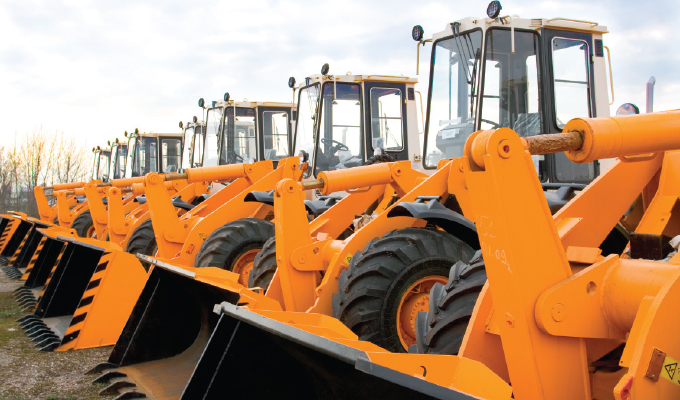By Jason Perez
Spreadsheets and whiteboards.
For too long, commercial contractors and construction companies have managed their rented and owned equipment through these old-school methods. From the largest excavator to the smallest gas-powered chainsaw, too many contracting professionals have been keeping track of their precious construction equipment in ways that can only be described as “medieval.”
Inefficiency is often the result. Machinery is lost. Time is wasted tracking it down. Data entry is time-consuming. Duplicate rentals are a common occurrence. Overdue rentals rack up unwanted costs. And if someone accidentally erases a whiteboard, forget it. Ultimately, it isn’t just time being wasted—it’s money. Lots of it.
What’s more, although the process of renting equipment from suppliers has actually become easier, managing all those rentals has become more complex, especially when the equipment comes from multiple suppliers.
There are technologies that can allow commercial contractors to better track their owned and rented assets. Some companies take advantage of them but too many don’t, for various reasons:
Some companies simply don’t know such resources exist.
Others are reticent to make the financial commitment. Construction companies often work on razor thin margins and any expenditures not deemed essential are often frowned upon.
For others, their current inadequate procedures are too ingrained in the company’s DNA (i.e., “We’ve being doing it this way for so long, and it’s worked pretty well, so why change?”) Of course, whether it actually has worked well is a dubious premise at best.
Perhaps the most obvious reason stems from the nature of the industry as it relates to technology and/or automation in general. As a whole, construction has not embraced the advent of technology as eagerly or readily as other industries. However, that trend has been reversing in recent years.
Take robotics, for example. Using robotics has allowed many construction companies to produce better quality work; solve the issue of skilled-labor shortages; and made the industry safer by taking the more dangerous and laborious tasks out of the hands of workers. Ultimately, robotic solutions have helped improve the quality, safety, and productivity of the construction industry.
And it’s not just robotics. Egnyte, a leading cloud content collaboration software company, featured a blog in which they identified the top ten Construction and Engineering Technology Trends to Watch in 2021. It’s an eclectic array of methodologies: cloud computing, AI, digital data, and systems integration are just a few of the advanced methodologies that will be gaining traction in the construction field. And how about VR visualization, in which 3D models allow builders and investors to see what a building will really look like before ground is even broken.

MOVING FORWARD
Which brings us back to our original point: With construction companies and contractors implementing advanced technology—not just related to actual construction but to so many aspects of their operation—why are they still using spreadsheets and whiteboards to manage their owned and rented assets?
There’s no reason they should be. YARDZ produces the most powerful platform available to perform this task—and much more.
As a company, we saw a massive vacuum, in which people were using manual processes that technology could solve. More specifically, we saw the need to “empower contractors and equipment managers and make things simple again.” With our experience in the construction and equipment rental industries, we were uniquely qualified to address this issue.
Consequently, we created YARDZ, a powerful tool for tracking rental and owned equipment. YARDZ lets companies save time and money by bringing technological efficiency to inventory management, reducing duplicate rentals and keeping close track of all equipment contracts and their provisions.
BENEFITS OF YARDZ
For rental equipment, the YARDZ tool allows contractors to see, in one place, all of their assets out in the field; the location of each piece of machinery; payment terms; and the date each item is due back at the supplier. The system also offers one-click call offs (calling rented equipment off on time is an area of huge potential savings), as well as alerts and inventory summaries.
For owned equipment, YARDZ provides the same high level of management functionality but includes additional features such as the ability to track and schedule equipment maintenance, as well as keeping an eye on warranty information.
There is also an important secondary benefit. Time not spent by managers or employees overseeing their equipment inventory can now be spent on other aspects of the job—perhaps aspects that previously weren’t getting done. So not only does the equipment management function become more efficient, but overall company productivity also gets a huge shot in the arm.
Clearly, the YARDZ platform provides significant value in any economy, but in a post-COVID-19 business environment, it’s even more dramatic. With the reopening of the global economy, especially domestically, the demand is gaining momentum. As construction companies and contractors increase their workload—some at impressive rates—there will be an accompanying need to rent and purchase more equipment.
CLOSING THOUGHT
Equipment management is too important to trust to inefficient, old-school methods. Time to go back to school—a new school.
About the Author:
Jason Perez is the cofounder and chief executive officer of YARDZ, the leading technology platform in the management of rented and owned assets. For more, visit yardz.com.
Modern Contractor Solutions, August 2021
Did you enjoy this article?
Subscribe to the FREE Digital Edition of Modern Contractor Solutions magazine.



